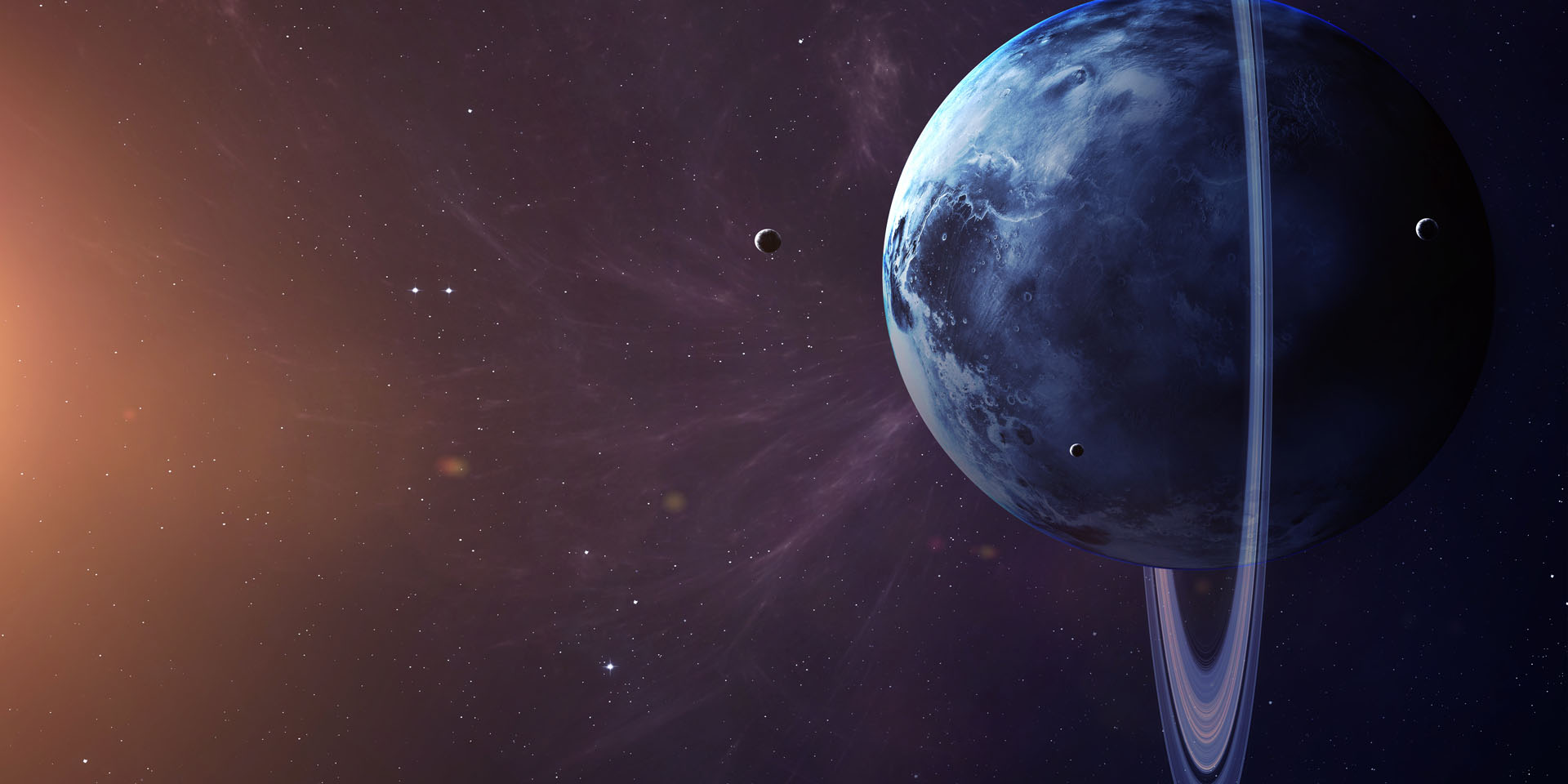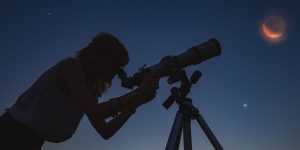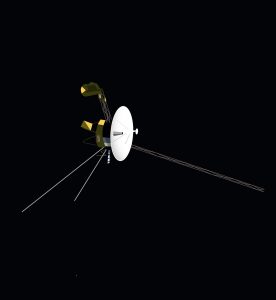
SUB.I | Uranus
Uranus, an “ice giant,” is robin’s egg blue in color, and it’s the fourth largest planet in mass and third largest in regards to its radius, in the entire solar system. Like most of the other planets, Uranus also has moons, although with only 27 it hardly comes close to the record. Unlike other planets, Uranus’ moons aren’t named after figures from Greek mythology, but instead after characters in plays written by William Shakespeare or Alexander Pope, such as Titania and Oberon, queen and king of the faeries in A Midsummer Night’s Dream.
Uranus also has a ring system like Saturn, but they weren’t discovered until 1977, by astronomers Jessica Mink, Edward W. Dunham, and James L. Elliot. They’re less visible and, until recently, considered rather unimpressive. But like so many things, there is more than meets the eye here. Uranus’ rings are quite different from those around other planets. The rings around Jupiter and Neptune all have quite a bit of fine, “dusty” particles, while Saturn’s rings have particles that range from dust sized all the way up to boulders. Uranus’ rings don’t have any dust — all the particles are at least as big as golf balls — but instead have sheets of dust between the rings. Though scientists don’t yet understand why this ring system is so different, they’re hoping to learn more once the James Webb Space Telescope, due to be launched in 2021, is operating.

One strange thing that you might notice about Uranus is that it spins on its side, unlike every other planet in the solar system. Think of it like this: if most of the planets spin like a top, Uranus rolls around like a ball. One theory is that an Earth-sized planet may have collided with Uranus, which forced its axis to drastically shift, but scientists are still debating that.
A day on Uranus lasts a little over 17 hours. A year lasts the equivalent of 84 years on Earth.
What’s up with the blue color? The third-most-abundant component of Uranus’s atmosphere is methane. Methane absorbs red light,so the result is Uranus’ aquamarine color. It might look really beautiful, but it’s definitely deadly!
Uranus became the first planet discovered with the use of a telescope. It wasn’t bright enough to be seen with the naked eye, like other planets discovered by ancient astronomers. William Herschel first saw it in 1781. At first Herschel thought it was a comet, but several years later it was confirmed as a planet. Though most of the planets are named after Roman deities, Uranus was the Greek god of the sky.
Even though Uranus isn’t the farthest planet from the sun, it does have the coldest overall recorded temperature of all the planets. The lowest temperature ever recorded on Uranus was -224 degrees Celsius (-371 degrees Fahrenheit). Interestingly, this is not the absolute coldest temperature we’ve recorded in the solar system. That honor goes to our own moon, where some craters near the south pole never get sunlight and have a recorded temperature of almost -238 degrees Celsius (397 Fahrenheit).

Only one spacecraft has flown by Uranus. In 1986, the Voyager 2 spacecraft swept past the planet at a distance of 81,500 kilometres on its way into deep space. Voyager collected a wealth of data about the planet, some of which was only analyzed recently. In the spring of 2020, scientists realized that Uranus had a “plasmoid,” which happens when some of a planet’s atmospheric material is drawn away by the planet’s magnetic field. A plasmoid is a ‘bound-together’ structure of plasma and magnetic fields. Scientists think plasmoids might explain natural phenomena such as ball lightning, magnetic bubbles in the magnetosphere, and objects in cometary tails, in the solar wind, in the solar atmosphere, and in the heliospheric current sheet. Sooo, Uranus has a plasma bubble….what’s a planetary fart made of?
But Uranus isn’t the only planet with a leaky atmosphere (ewwww). Mars has already lost most of its atmosphere, Venus is losing hydrogen from its atmosphere, and even Earth loses about 90 tons of atmospheric material a day. Not to worry, though — we have over 5 trillion tons to spare.
Our journey through the outer planets is nearly complete, but the last leg will take us over 1.5 billion kilometres from Uranus, 4.3 billion miles from home on Earth, and 4.5 billion kilometres from the warmth of the sun. You’re going to need some really warm socks for this part.
Curriculum Reference Links
- Earth and Space / Building Blocks/ 1: Students should be able to describe the relationships between various celestial objects including moons, asteroids, comets, planets, stars, solar systems, galaxies and space.
- Earth and Space / Building Blocks/ 3: Students should be able to interpret data to compare the Earth with other planets and moons in the solar system, with respect to properties including mass, gravity, size, and composition.




